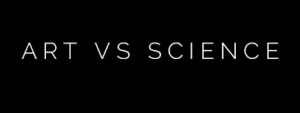 There are plenty of books, blogs, webinars, and training to tell you HOW to do major gifts, including all the content we publish. And if you absorb and retain all of it – from every source, and apply even the tiniest points – you may still fail at DOING major gifts in the long run.
There are plenty of books, blogs, webinars, and training to tell you HOW to do major gifts, including all the content we publish. And if you absorb and retain all of it – from every source, and apply even the tiniest points – you may still fail at DOING major gifts in the long run.
Why?
Because major gift fundraising is more than strategy, formulas, and structure, as important as all of those things are.

Lisa Robertson
As our colleague Lisa Robertson so aptly put it: “There’s a science behind what makes major gifts successful. It’s a formula or method based on certainty, i.e., A + B = C. But when you’re working with donors and their seasons of life – their circumstances – you need to apply common sense, intuition, perception, and heart. And that’s the art of it.”
Jeff and I couldn’t agree more.
That’s why you always hear us talking about both of these areas: structure/strategy, and the heart of fundraising. You can’t do one without the other.
Lisa continues: “The Veritus Way is a philosophy, and there are systems we’ve found to be effective. But if you stick only to the science part, you end up being manipulative, trying to control donors and circumstances to make them fit into what you want, rather than on what’s best for the donor or the organization. When you add in the heart part, you adjust and are respectful of the donor and mindful of the very special role you play in their lives.”
I couldn’t have said it better myself!
Here’s my question for you: how much time are you spending on the heart/art side of things? I know you’re probably consuming a lot of strategy and how-to information from us and others. But what priority are you giving to the heart/art side of major gifts? That’s a “muscle” in your fundraising body that needs development, exercise, and attention. (Tweet it!)
Here are a few ways to get you started and on the right path in this area:
- Start every workday – I mean every workday – reminding yourself what major gifts is all about. It’s not about getting your donor’s money. It’s about helping your donor do good on the planet through your organization. Remind yourself of this vital point and get grounded in it.
- Systematically go through every donor on your caseload periodically, and ask yourself: “do I know what good this donor wants to do with us?” If you don’t, find out.
- Then, systematically, donor by donor, ask yourself: “how am I going to help this donor accomplish the good they want?” Answer the question for each donor.
- Then organize yourself to implement what you’ve identified with each donor.
- Once a week – put it on your calendar – go through your caseload and ask yourself: “am I giving this donor enough information about how their gift is making a difference so that it fills their heart with joy and fulfillment?” If not, do something about it.
If you do these five things, and consistently stay with it, it will start to change the way you think and act. You’ll become more tuned-in to the donor. You’ll develop more heart and more art. Try it. It will make a tremendous difference for you, the donor, and the organization.
Richard




Love your blogs! So glad a colleague told me about them.
Such a great reminder of how the art and science of fundraising work together! Our team at World Help is so grateful for the Veritus Group!
This post resonated with me, thank you!